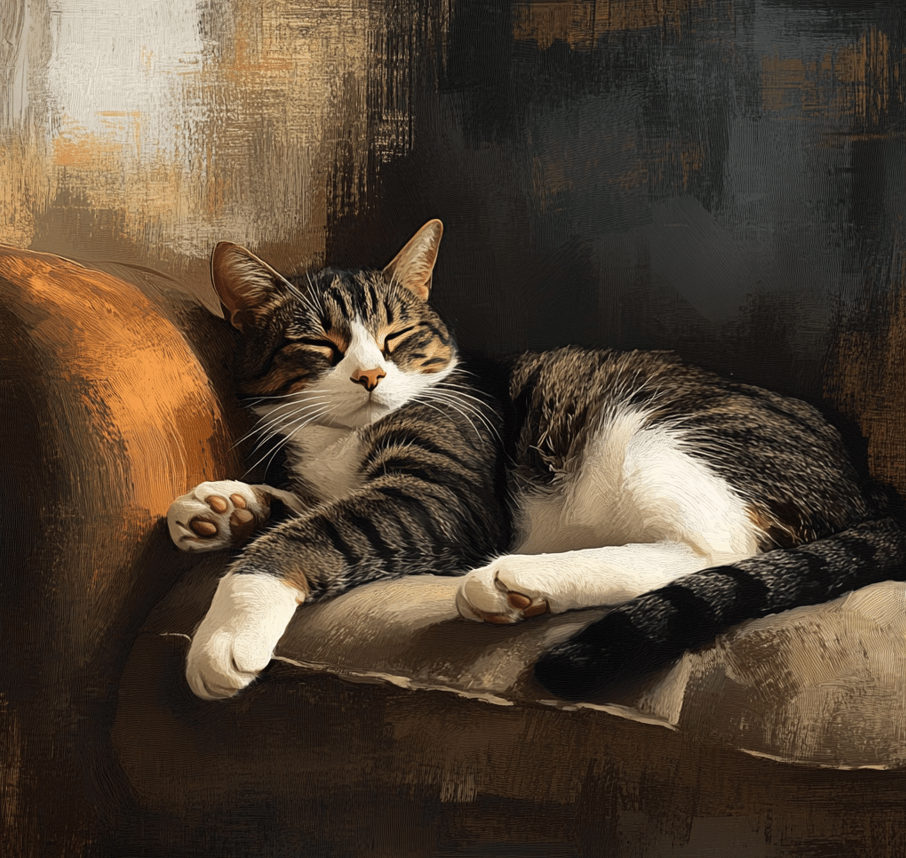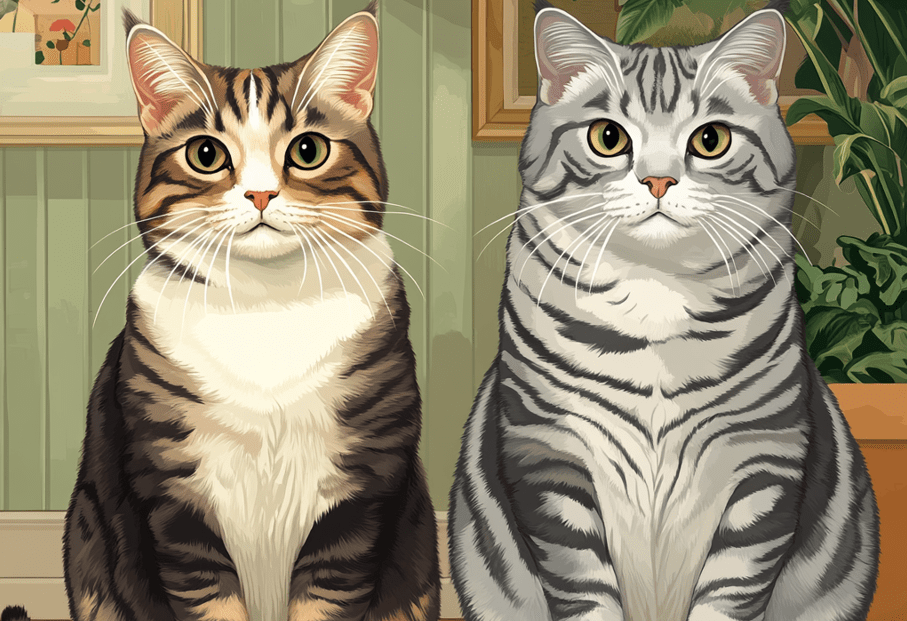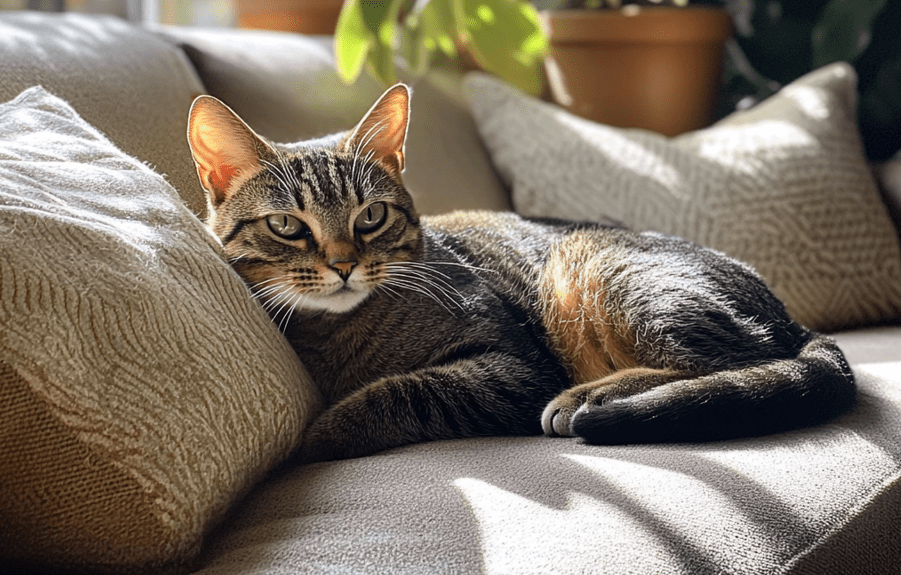
Training a cat may seem challenging, but it’s entirely possible to teach your Domestic Shorthair basic commands like “sit,” “stay,” or “come.” Domestic Shorthairs, known for their intelligence and adaptability, can learn these skills with patience and the right approach. Teaching your Domestic Shorthair basic commands not only strengthens your bond but also provides mental stimulation and improves their behavior. This comprehensive guide offers step-by-step instructions, expert tips, and practical strategies to help you train your cat effectively, ensuring a rewarding experience for both of you.
Why Train Your Domestic Shorthair?
Domestic Shorthairs are one of the most common cat breeds, with diverse genetic backgrounds that contribute to their curiosity and quick learning ability. Training offers numerous benefits:
Mental Stimulation: Learning commands engages your cat’s mind, reducing boredom and preventing destructive behaviors.
Improved Behavior: Commands like “sit” or “stay” can help manage unwanted behaviors, such as jumping on counters or running out doors.
Stronger Bond: Training sessions foster trust and communication between you and your cat.
Safety: Commands like “come” can be lifesaving in emergencies, helping you recall your cat from dangerous situations.
Understanding Your Domestic Shorthair’s Learning Style

Before diving into training, it’s important to understand how Domestic Shorthairs learn. These cats are motivated by rewards, curiosity, and positive experiences. Unlike dogs, cats are more independent, so training must be engaging and stress-free. Key principles include:
Positive Reinforcement: Reward desired behaviors with treats, praise, or play to encourage repetition.
Short Sessions: Cats have short attention spans, so keep training sessions to 5-10 minutes.
Consistency: Use the same cues, rewards, and techniques to avoid confusing your cat.
Patience: Every Domestic Shorthair learns at their own pace, so celebrate small victories and avoid punishment.
Pro Tip: Observe your cat’s personality. Some Domestic Shorthairs are food-motivated, while others respond better to toys or affection. Tailor your approach to their preferences.
Preparing for Training
To teach your Domestic Shorthair basic commands successfully, set the stage for effective learning with these preparations:
1. Choose the Right Environment
1.Select a quiet, distraction-free area, such as a living room or bedroom, where your cat feels comfortable.
2.Remove toys, food bowls, or other distractions that might divert their attention.
2. Gather Supplies
High-Value Treats: Use small, soft treats like freeze-dried chicken, tuna, or commercial cat treats. Break them into tiny pieces to avoid overfeeding.
Clicker (Optional): A clicker can mark desired behaviors precisely, helping your cat associate the sound with a reward.
Favorite Toy: For cats less motivated by food, a feather wand or small toy can serve as a reward.
Training Mat or Target: A small mat or object can help teach commands like “sit” by giving your cat a specific spot to focus on.
3. Establish a Reward System
1.Choose a consistent reward (e.g., a treat or praise) and deliver it immediately after the desired behavior.
2.Pair rewards with a verbal cue, like “good” or “yes,” to reinforce the connection.
Step-by-Step Guide to Teaching Basic Commands
Below are detailed instructions for teaching your Domestic Shorthair three foundational commands: “sit,” “stay,” and “come.” These build a strong training foundation and can be adapted for other commands.

1. Teaching “Sit”
The “sit” command is an excellent starting point, as it’s natural for cats to sit and easy to reinforce.
Steps:
Get Your Cat’s Attention: Hold a treat near your cat’s nose to capture their interest.
Guide the Behavior: Slowly move the treat up and slightly back over their head. As their head follows the treat, their hindquarters will naturally lower into a sitting position.
Mark and Reward: As soon as their bottom touches the ground, say “sit,” click (if using a clicker), and give the treat.
Add the Cue: Once they consistently sit for the treat, introduce the verbal cue “sit” just before moving the treat.
Fade the Lure: Gradually reduce the treat’s movement, using only the verbal cue and hand signal (e.g., raising your hand). Reward when they sit.
Practice Regularly: Practice in short sessions, 2-3 times daily, until your cat responds reliably.
Tips:
1.If your cat jumps for the treat, lower it closer to their nose or try training when they’re calmer.
2.Practice in different locations to generalize the command.
2. Teaching “Stay”
The “stay” command teaches your Domestic Shorthair to remain in place, useful for preventing door-dashing or managing guests.
Steps:
Start with “Sit”: Ask your cat to sit, as this is a stable starting position.
Introduce the Cue: Say “stay” while holding your hand out, palm facing your cat, as a visual signal.
Reward Small Steps: Wait 1-2 seconds, then reward with a treat and praise if they remain seated. If they move, calmly reset and try again.
Increase Duration: Gradually extend the time before rewarding, starting with 3-5 seconds and building up to 10-20 seconds.
Add Distance: Take a small step back after saying “stay.” Return and reward if they stay in place. Slowly increase the distance.
Release Cue: Introduce a release word like “okay” to signal they can move, rewarding them afterward.
Tips:
1.Keep sessions short to avoid frustration, especially with young or energetic cats.
2.If your cat breaks the stay, reduce the duration or distance and build up more slowly.
3. Teaching “Come”
The “come” command encourages your Domestic Shorthair to approach you, ideal for recall during play or emergencies.
Steps:
Start Close: Stand a few feet away and call your cat’s name followed by “come” in an upbeat tone (e.g., “Fluffy, come!”).
Lure with a Treat: Hold a treat or toy to entice them toward you. Reward as soon as they move in your direction.
Mark the Behavior: Say “good” or click when they start coming, then give the treat when they reach you.
Increase Distance: Gradually call them from farther away, rewarding each successful approach.
Practice Without Lures: Once they respond reliably, phase out the treat lure, using only the verbal cue and rewarding after they come.
Generalize the Command: Practice in different rooms or with distractions (e.g., toys or mild noises) to reinforce reliability.
Tips:
1.Never punish your cat for not coming, as this can make them associate the command with negativity.
2.Use high-value rewards for “come” to make it especially appealing.
Advanced Tips for Successful Training
Once your Domestic Shorthair masters basic commands, enhance their training with these advanced strategies:
Chain Commands: Combine commands, like asking your cat to “sit” and then “stay,” rewarding each step.
Add Distractions: Practice in busier environments, like during family activities, to improve reliability.
Teach New Commands: Build on basics with commands like “high-five,” “spin,” or “go to mat” for added fun and challenge.
Incorporate Play: Use training as part of playtime, rewarding commands with a quick chase of a feather wand.
Common Training Challenges and Solutions

Training a Domestic Shorthair can come with hurdles. Here’s how to address common issues:
1. Lack of Interest
Solution: Try higher-value rewards (e.g., tuna or a favorite toy) or train when your cat is slightly hungry, like before mealtime.
Tip: Keep sessions fun and end on a positive note, even if progress is slow.
2. Distraction or Restlessness
Solution: Train in a quieter environment or at a time when your cat is naturally calmer, like after playtime.
Tip: Shorten sessions to 3-5 minutes for easily distracted cats.
3. Inconsistent Response
Solution: Review your cues and ensure everyone in the household uses the same words and signals.
Tip: Go back to basics, reinforcing the command with lures before fading them again.
4. Stress or Fear
Solution: If your cat seems anxious, pause training and focus on building trust with play or affection.
Tip: Avoid forcing participation, as this can create negative associations.
Special Considerations for Domestic Shorthairs
Domestic Shorthairs’ diverse genetics mean their personalities and learning styles vary widely. Some may be bold and eager, while others are shy or cautious. Tailor training to your cat’s temperament:
Kittens: Young Domestic Shorthairs are highly trainable but have shorter attention spans. Use frequent, brief sessions.
Senior Cats: Older cats can learn but may need slower pacing and gentler rewards, like petting.
Rescue Cats: Cats with unknown histories may need extra time to build trust before training begins.
Pro Tip: Consult a veterinarian if your cat shows sudden resistance to training, as this could indicate health issues like dental pain or stress-related conditions.
Long-Term Benefits of Training
Consistently training your Domestic Shorthair fosters lifelong benefits:
Behavioral Management: Commands help redirect unwanted behaviors, like scratching furniture or meowing excessively.
Enrichment: Training keeps your cat mentally sharp, especially as they age.
Emergency Preparedness: A reliable “come” or “stay” can protect your cat in unexpectedрави
Fun and Engagement: Training sessions are inherently engaging, turning learning into a game for your Domestic Shorthair.
Common Mistakes to Avoid
To ensure successful training, avoid these pitfalls:
Using Punishment: Yelling or scolding can make your cat fearful and less responsive. Stick to positive reinforcement.
Inconsistent Cues: Changing words or signals confuses your cat. Be consistent across all sessions.
Overly Long Sessions: Training beyond 10 minutes can lead to boredom or frustration. Keep it short and fun.
Expecting Instant Results: Cats learn gradually. Celebrate small successes and stay patient.
Conclusion

Teaching your Domestic Shorthair basic commands like “sit,” “stay,” and “come” is a rewarding journey that enhances your cat’s life and strengthens your bond. By using positive reinforcement, short sessions, and tailored strategies, you can tap into your Domestic Shorthair’s intelligence and curiosity to achieve impressive results. This guide provides the ultimate resource for cat owners, offering step-by-step instructions, troubleshooting tips, and long-term strategies to ensure training success.
Whether you’re starting with a kitten or an adult cat, these techniques empower you to create a well-behaved, mentally stimulated Domestic Shorthair. With patience and consistency, you’ll be amazed at what your feline friend can learn, making training a fun and enriching experience for both of you.




